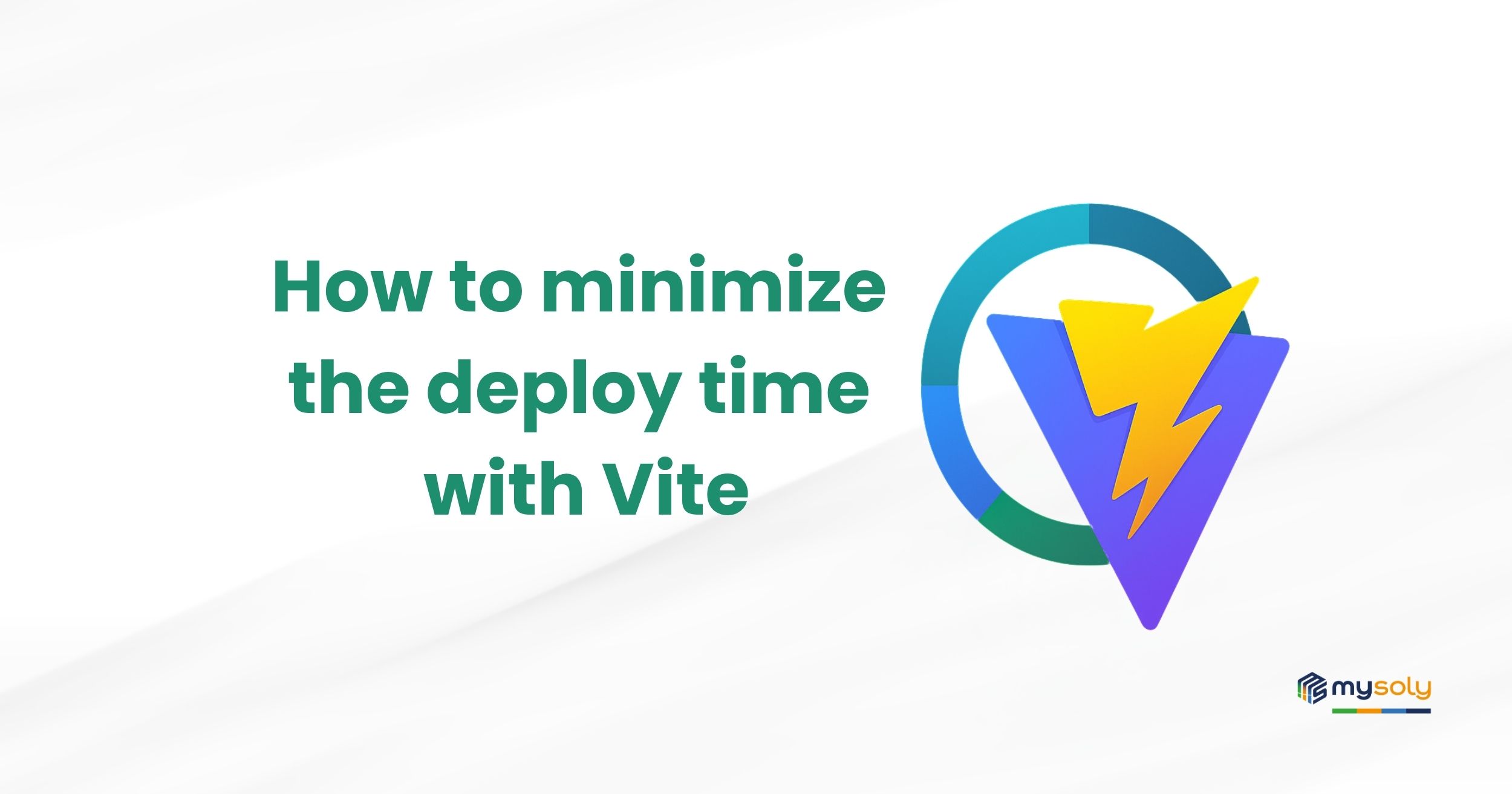Minimize the deploy time with Vite
Introduction
Speed is a critical requirement in modern frontend development processes. Developers aim to minimize time loss during local development and production build stages. However, traditional tools fail to meet this need, especially in scaled projects. For example, seeing “Compiled successfully in 89.6 seconds” in a React project raises concerns about efficiency. Such delays negatively affect not only the developer experience but also team productivity and CI/CD processes. In projects developed with CRA, increasing dependencies and complex configurations deepen this problem. At this point, Vite offers a solution with its modern architecture. It stands out with features such as an instant development server, native ESM, and lazy module loading.
This article will discuss the reasons for migrating from CRA to Vite, outline key considerations, and highlight the tangible benefits achieved.
Table of Contents
Understanding Vite
Vite is a modern ESM (ES Modules)-based build tool developed by Evan You (creator of Vue.js). While traditional bundlers (like Webpack, Parcel) compile the entire project from start to finish, Vite processes only the required module instantly. Thus it is incredibly fast, especially for large projects. In short:
- ESM + HMR in the development environment
- Rollup in the build phase (for production)
- Zero-config and plugin-friendly structure
Advantages
Instant Dev Server + HMR
With Vite, you write your code, press save, and immediately see the result in your browser. You don’t need to refresh the page manually. Even better, your app keeps its state — nothing is lost. This makes development faster and smoother.
Smaller Builds
When you build your project for production, Vite uses Rollup under the hood. Because of this, tree-shaking is more effective. Unused code is removed. As a result, your final bundle is smaller compared to what CRA produces. This means faster load times for your users.
Minimal Configuration
You don’t need to write long or complex config files. The vite.config.js file is short and easy to understand. You can set up tools like TypeScript, Tailwind CSS, or JSX without extra effort. Everything works together right out of the box.
Plugin Ecosystem
You can extend Vite easily using plugins. It supports both Vite’s plugins and Rollup plugins. This gives you a lot of flexibility. For example, you can use:
- vite-plugin-pwa to turn your app into a Progressive Web App
- vite-plugin-svgr to import SVGs as React components
- vite-plugin-mkcert to create local HTTPS certificates with no hassle
These plugins help you build faster and more powerful apps without writing everything from scratch.
Disadvantages
Legacy Browser Support (IE11)
Vite doesn’t support Internet Explorer 11. If your users still use it, Vite isn’t ideal.
Ecosystem Migration
Older libraries that use CommonJS may not work well. You might need to replace or configure them.
SSR and Monorepo Complexity
In complex setups like SSR or monorepos, Vite may need extra configuration.
Notable Projects Using Vite
1. Vue 3 Docs
The official documentation site of Vue.js (https://vuejs.org) is built with Vite. Thanks to fast page transitions and content loading performance, Vite’s SSR (Server Side Rendering) capabilities are visible here.
2. React Router Docs
The documentation site of React Router, one of the core libraries of the React ecosystem, was built using Vite. Source: https://reactrouter.com
3. SvelteKit
The official application framework of the Svelte framework, SvelteKit uses Vite by default. Vite’s fast hot-module replacement (HMR) plays a critical role in this performance-centered project.
4. StackBlitz
StackBlitz is a browser-based development environment similar to VSCode. It is one of the biggest platforms supporting Vite. The platform uses Vite’s HMR architecture to enable real-time code compilation and live previews.
5. Laravel + Inertia.js
In Laravel’s modern SPA structure, especially with Inertia.js, Vite usage has become widespread in the frontend layer. Since Laravel 9, Vite has been used by default instead of Webpack. Build times have significantly decreased, especially with Tailwind CSS.
6. Vitest
Vitest, which emerged as an alternative to Jest, uses Vite’s infrastructure directly. This allows leveraging Vite’s power even in test environments.
7. Nuxt 3 (for Vue)
Nuxt 3 is the SSR-supported meta-framework for Vue.js. It was released with built-in support for Vite. Thanks to this integration, the development process became significantly faster and smoother.
8. Headless CMS UI Kits like Storyblok, Sanity
Vite has become one of the preferred options in the modern starter kits of these CMS platforms. It is especially favored for fast local development.
Comparison with Other Build Tools
Modern frontend projects commonly use three popular build tools: Vite, Webpack, and Parcel. These tools differ significantly in terms of speed, configuration, and developer experience. The table below compares them based on key features. Vite clearly stands out for teams that value speed and simplicity in their development workflow.

Benchmarking Vite
To make the comparison, two separate React projects with identical features were created. The durations of development (npm run start) and build (npm run build) commands were measured on systems with Intel Core i7-10700K and AMD Ryzen 7 5800X CPUs. CI/CD build times in GitHub Actions were also compared.
Intel Core i7-10700K, 16GB RAM

AMD Ryzen 7 5800X, 16GB RAM

GitHub Actions - CI/CD

The transition from CRA to Vite provides serious performance improvements in development and deployment processes. Startup time drops from 30–60 seconds to 2–5 seconds. HMR response time decreases from 3–6 seconds to <100ms. In CI/CD pipelines, a speedup of 3 to 4 times (especially when using vite build –ssr) is observed. Especially in pipelines triggered automatically with every code push, this difference means hours of saved time in total. By accelerating both the local development experience and production processes, Vite directly contributes to project efficiency.
Bonus: Steps to Migrate from CRA to Vite
Migrating from a CRA (Create React App) project to Vite is easier than you might expect. Just follow these simple steps:
Step 1 – Create a New Vite Project
Run the following commands in your terminal:

Step 2 – Copy Your src Folder
Take the entire src/ folder from your old CRA project and move it into your new Vite project.
You also need to adjust the entry files like:
- index.html (Vite uses this directly)
- main.jsx or main.tsx (depending on your setup)
Step 3 – Configure vite.config.js
Replace or create the configuration file with the following content:

Step 4 – Adjust Environment Variables
In CRA, all environment variables must start with REACT_APP_.
In Vite, they must start with VITE_.

Conclusion
Create React App (CRA) has been a starting point for many developers entering the frontend world. Though it provided a solid foundation over the years, it started facing slowdowns due to increasing project complexity and growing codebases. Long startup and build times made it difficult to maintain the agility required by modern development processes. On the other hand, complex configurations further reduced productivity.
At this point, Vite has emerged as a new standard with its fast and simple structure tailored to today’s needs. It stands out for not only its speed but also its architecture that redefines the developer experience. Instant Hot Module Replacement (HMR), optimized build processes, and minimal configuration have the potential to change how we write and manage projects. Migrating to Vite is not just a tool change; it is a significant step forward in terms of performance, speed, and modern development. With this transition, many developers will ask themselves, “Why didn’t I switch earlier?”
Looking to take your development workflow even further? Explore more insights and strategies about streamlining your app development process in our. Discover how modern tools and techniques can transform the way you build, scale, and maintain applications.
References:



